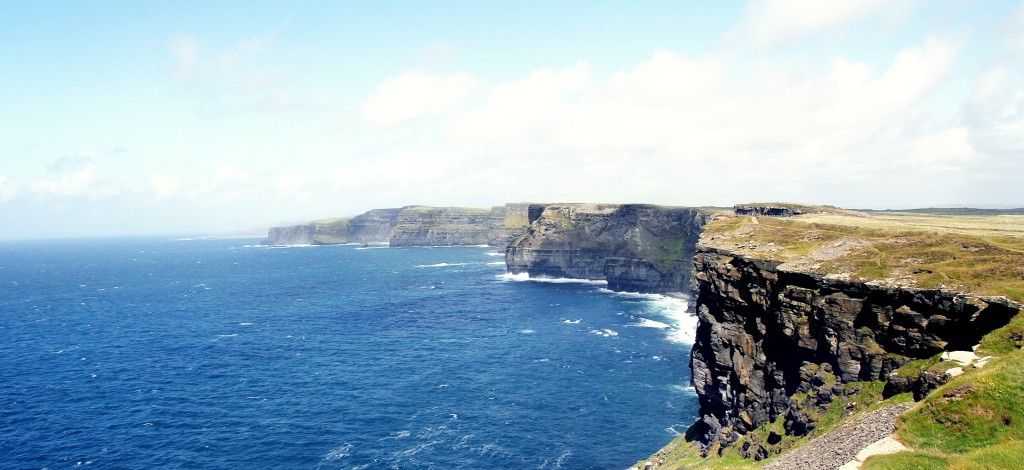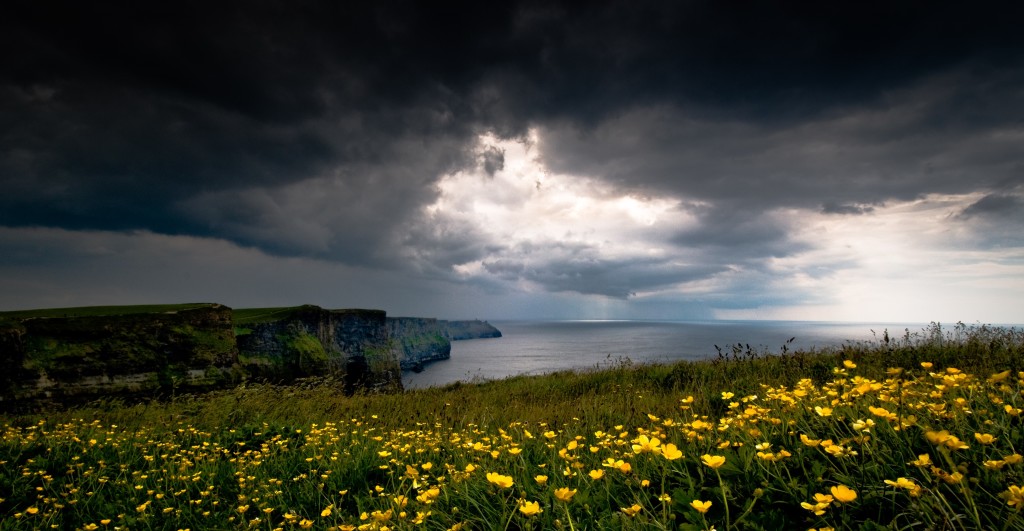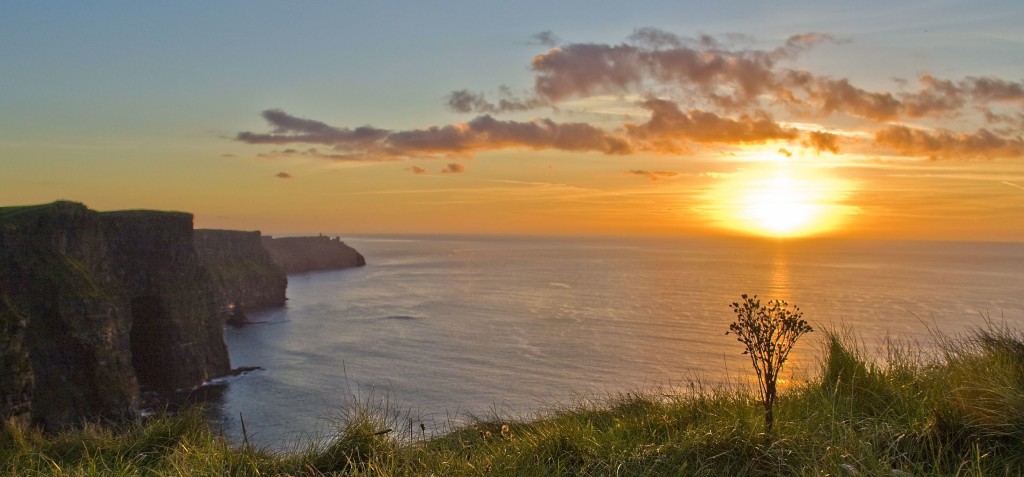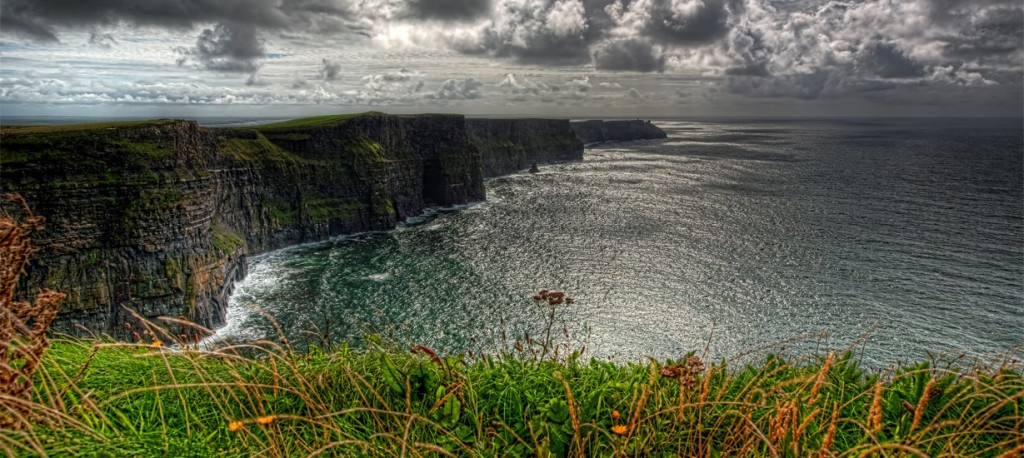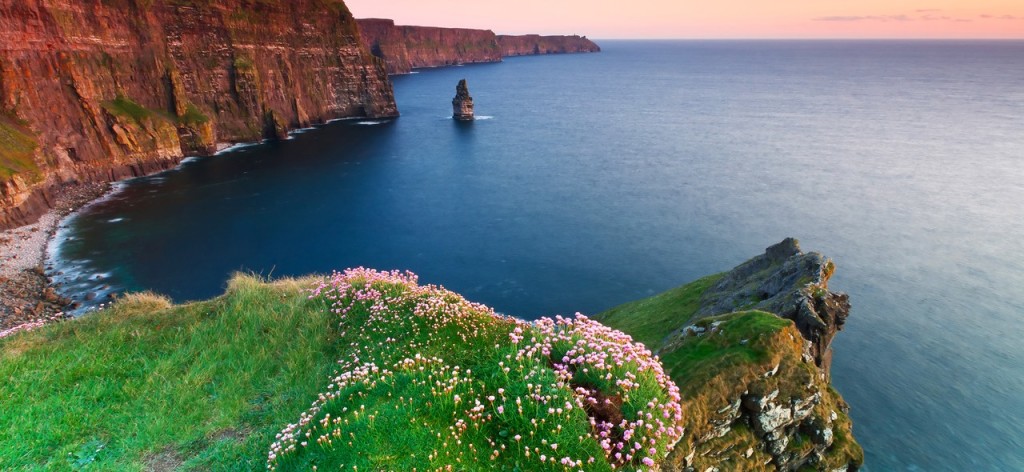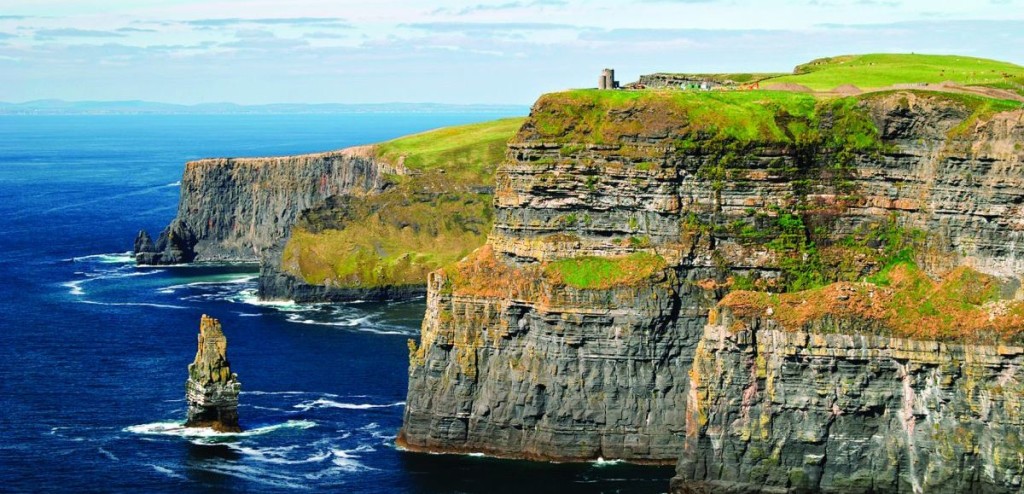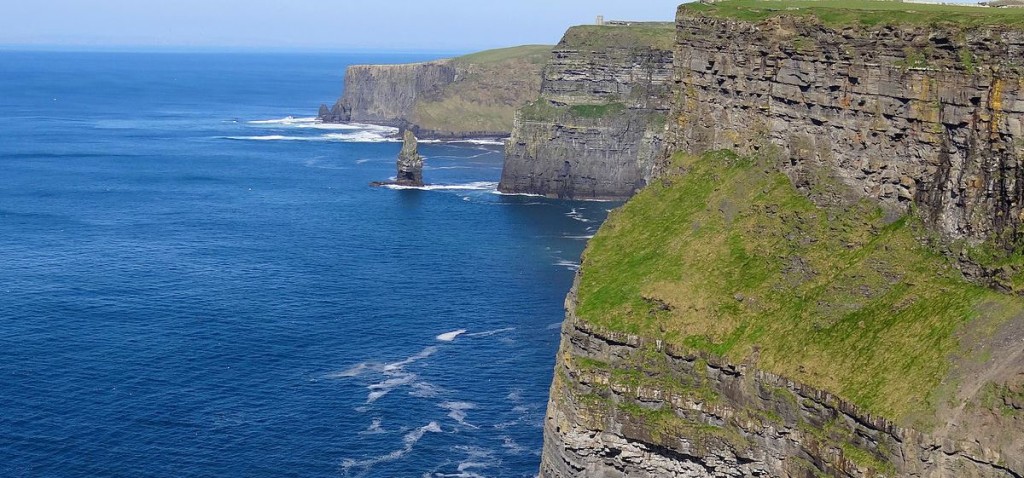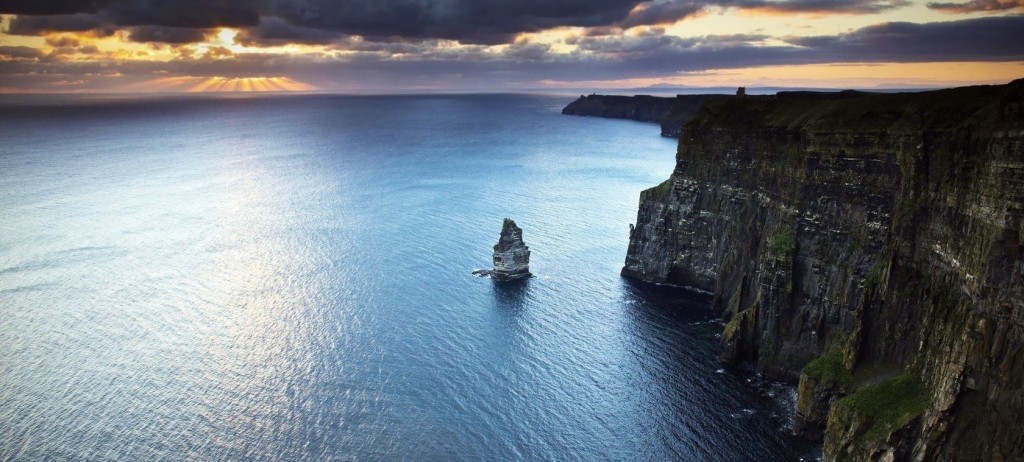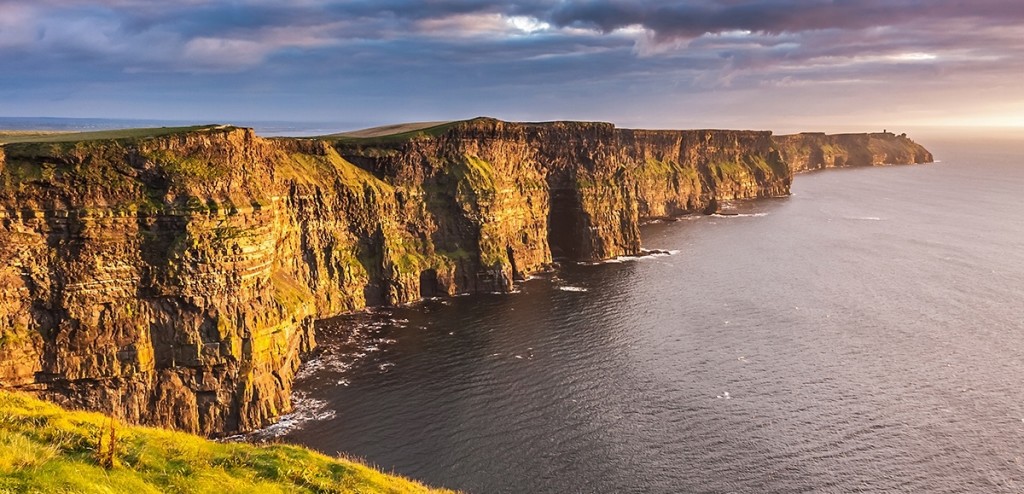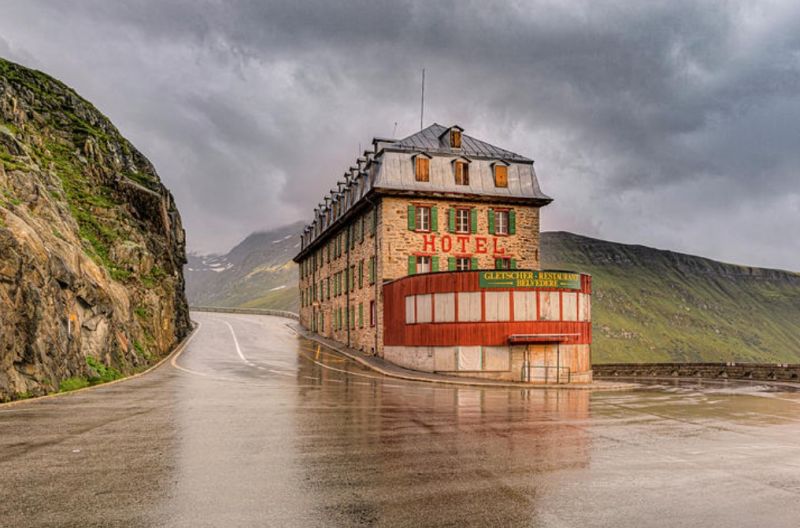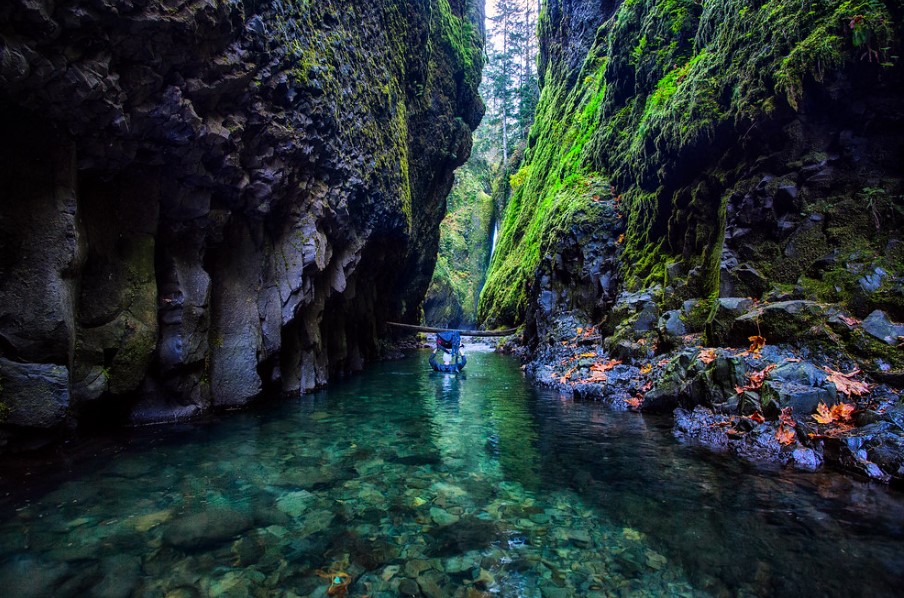The Cliffs of Moher or Aillte a Mhothair are situated at the southwestern edge of the Burren region in County Clare, Ireland. The Cliffs of Moher are Ireland’s top-visited natural attraction, with a magical vista that captures the hearts of up to one million visitors every year. The cliffs receive their name from an old fort called Moher that once stood on Hag’s Head, the southernmost point of the cliffs.
They rise 390 ft above the Atlantic Ocean at Hag’s Head and reach their maximum height of 702 feet just north of O’Brien’s Tower, 8 KM to the north. The tower is a round stone tower near the midpoint of the cliffs, built by Sir Cornelius O’Brien in 1835. On a clear day, one can see from cliffs atop the tower, the Aran Islands in Galway Bay, the Maumturks and Twelve Pins mountain ranges to the north in County Galway, Maum Turk mountains in Connemara and Loop Head to the south, and the Dingle Peninsula and Blasket Islands in Kerry. O’Brien’s Tower stands near the highest point and has served as a viewing point for visitors for hundreds of years.
The North platform is situated at the highest point of the Cliffs, Knockardakin at 700 feet above sea level, which is the location of the Tower viewpoint, O’Brien’s Tower, built by Cornelius O’Brien. From this point, you can view the Branán Mór Sea Stack, home of the guillemots and razorbills. Therefore, you can also view the surfing wave ‘Aileen’s’, Aill Na Searrach, to the right when it is up and running.
On a sunny day, you can view the Aran Islands: Inis Oírr, Inis Méain, and Inis Mór, and to the left views of the stunning Galway Bay. Moreover, from this platform, you have a terrific view of the South Cliffs that stretch for 8 km. You can walk to Doolin, about five kilometers, from this point along the Coastal Walk.
Furthermore, The South Platform is a perfect viewpoint of the Puffin colony; the puffins make their home on Goat Island, a grassy island when you see down and to the right. You can also see countless other seabirds and also have tremendous views of the sea stack below O’Briens Tower. From this point, you can see the Cliffs as they continue on towards Hags Head. You may continue your walk to Hags Head, it is roughly four kilometers each way with magnificent views of the Cliffs. The first floor of the Visitors Center houses the Cliffs View Café, providing marvelous views of the Cliffs from the windows looking out of the hillside.
The cliffs are one of the most widespread tourist destinations in Ireland and topped the list of attractions, and they’ve formed a part of the Burren and Cliffs of Moher, Geopark, one of a family of tourism destinations throughout Europe that are members of the European Geo-parks Network visitor center. Clare County Council started development plans in 1990 to enable tourists to get the experience of cliffs without substantial intrusive man-made amenities.
The visitor can experience the history built into a hillside approaching the cliffs. The center is intended to be environmentally sensitive in its use of renewable energy systems including geothermal heating and cooling, solar panels, and grey-water recycling. The Cliffs of Moher visitor experience won an award in the “Interpret Britain & Ireland Awards” 2007 awarded by the Association of Heritage Interpretation. Though the award was precisely for the Atlantic Edge exhibition, the AHI assessed the whole visitor center and site. The citation stated that the entire visitor center was “one of the best facilities that the judges had ever seen.”
The cliffs comprise mainly beds of Namurian shale and sandstone, with the oldest rocks being found at the bottom of the cliffs. It is likely to view 300 million-year-old river channels cutting through, forming nonconformists at the base of the cliffs. There are an estimated 30,000 birds living on the cliffs, representing more than 20 species. These include Atlantic Puffins, which live in large colonies at isolated parts of the cliffs and on the small Goat Island. Also, present are gulls, guillemots, hawks, shags, ravens, and coughs.
Read More – Magnificent 104Ft DeSoto Falls of Mentone Alabama
